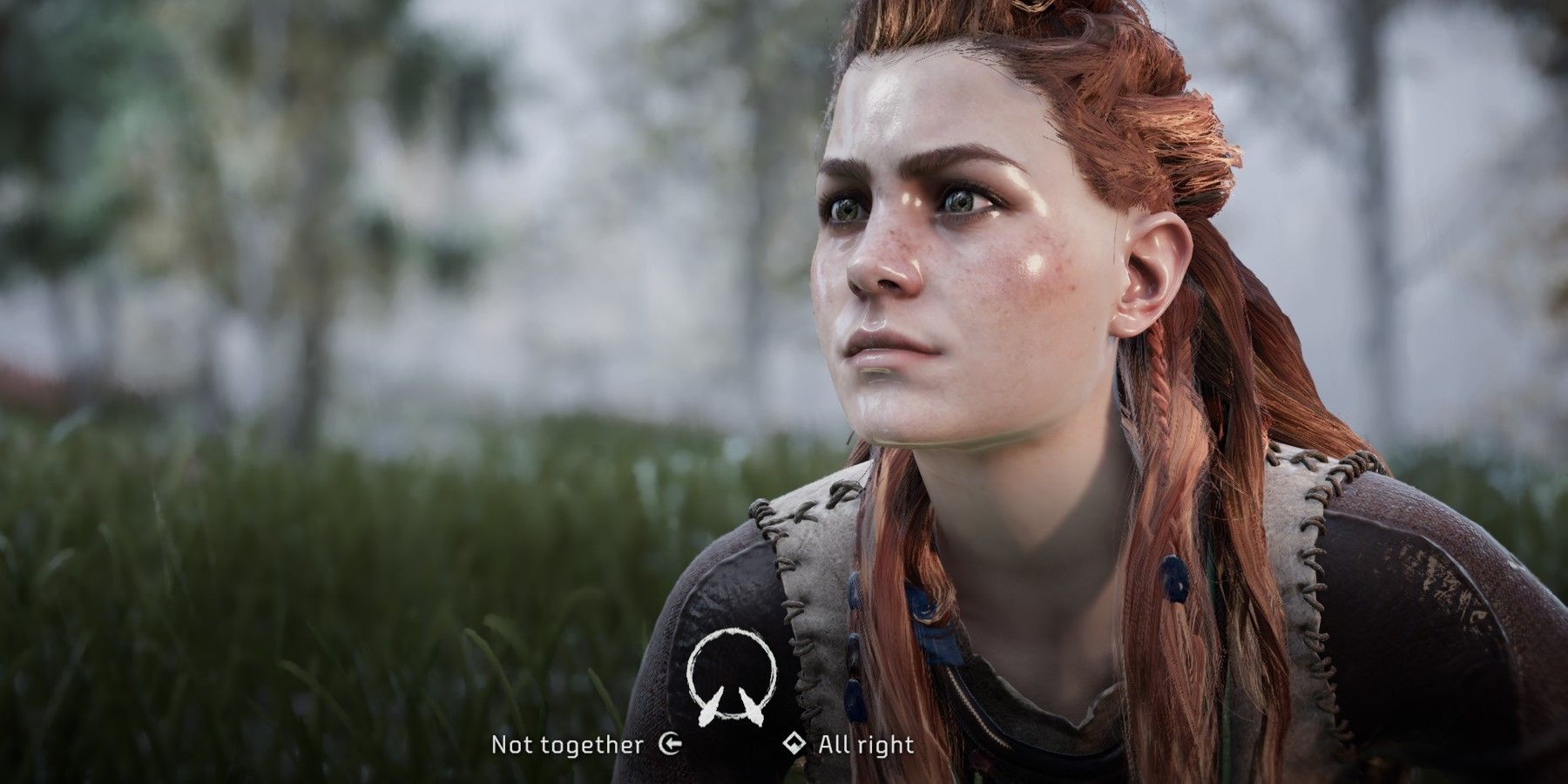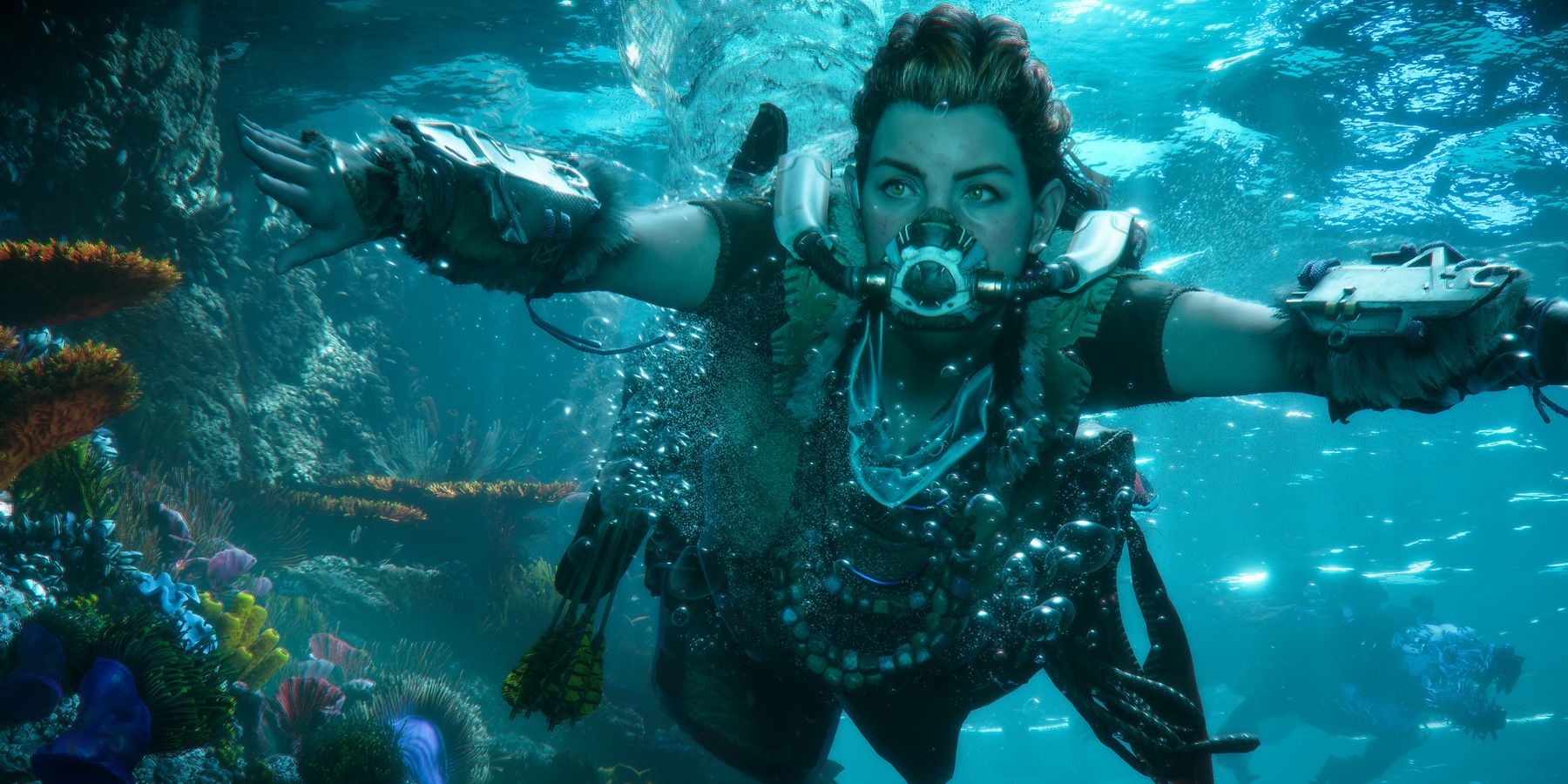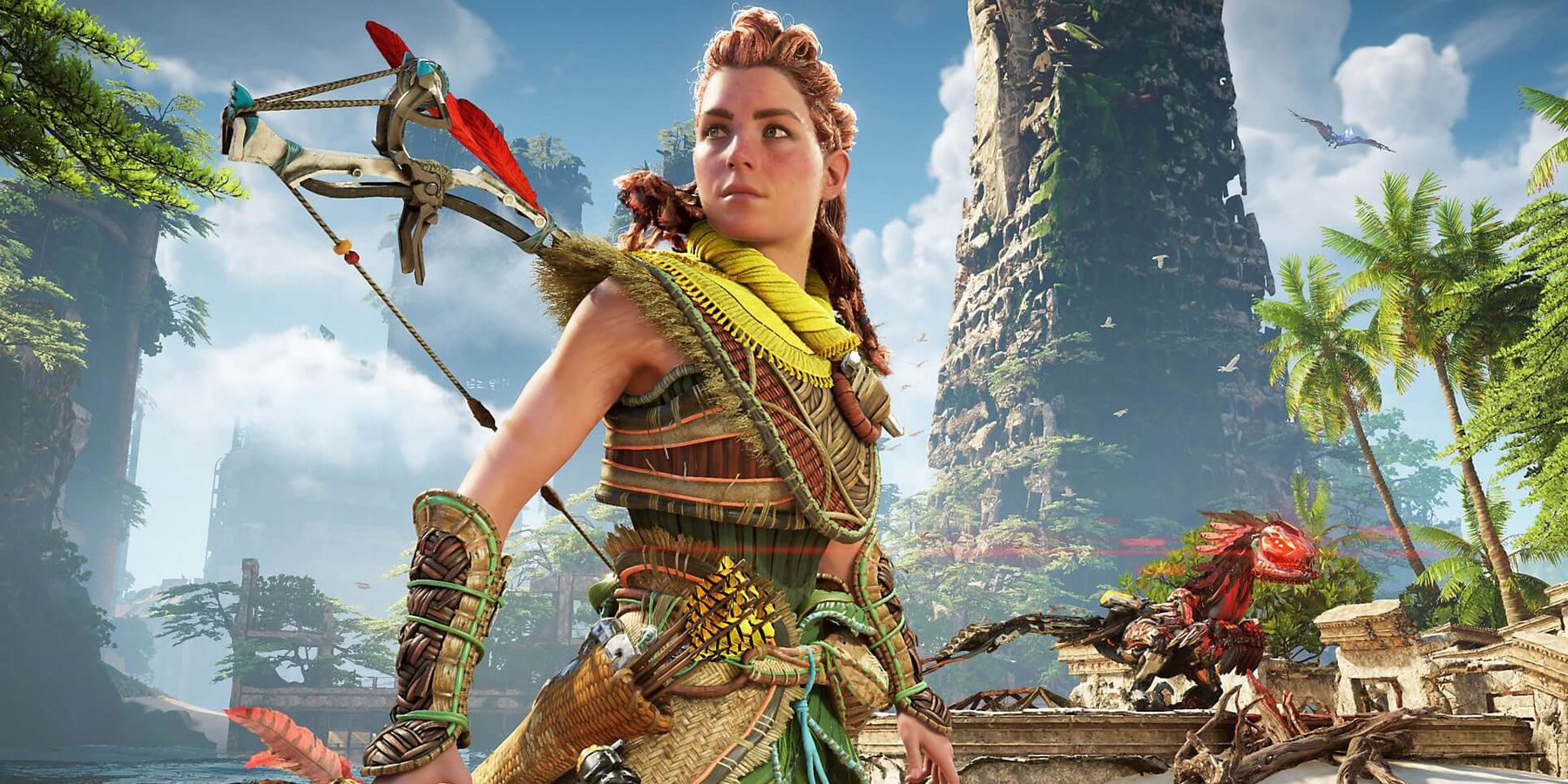Horizon Zero Dawn introduced gamers to a dystopian world destroyed by human-made machines. Following these apocalyptic event, nature has begun to recover, but deadly robots with terrifying weapons still roam the wilderness. Aloy must hunt and kill these metal monsters as she attempts to uncover the secrets of the past and her origins. Aloy’s story continues in Horizon Forbidden West, where she travels to the titular Forbidden West to locate the source of a mysterious infection destroying the world.
Horizon Forbidden West improves upon the main draw of its predecessor, which is gameplay. Aloy has more weapons than ever at her disposal, and the variety of machines she is up against forces players to implement creative strategies to take them down. While the gameplay of Horizon Forbidden West is certainly praiseworthy, its storytelling methods leave a lot to be desired, as there are too many moments where players can just put the controller down and watch characters deliver dry dialogue.
The Problem with Horizon Forbidden West's Storytelling
Horizon Zero Dawn tells an interesting story that blends ecological themes with science-fiction tropes in clever and unique ways. Horizon Forbidden West continues this trend, but it dares to be even bolder. Gamers come across clones, intergalactic travelers, hyper-intelligent AI, and more within the game’s playtime. All its side characters are fully fleshed out, and returning to their settlements after a time unlocks new dialogue options, making the world and its inhabitants feel truly alive.
Although Horizon Forbidden West’s plot always leaves players wanting to discover more, the game tends to reveal important information in a boring manner. Oftentimes, exposition is delivered by talking to key characters, with interactions limited to simply picking options from a dialog wheel. This solution is not a problem when it is used sparingly, but in Horizon Forbidden West, gamers have to work through multiple dialog options - some of which lead to additional wheels.
The problem with dialog wheels is that they are not engaging as a video game mechanic, and make receiving information less exciting. The information is typically delivered in a dry fashion, and characters can talk for minutes at a time. To make matters worse, there is often nothing visually interesting going on while the characters are talking, so people are stuck staring at Aloy and her interlocutor's faces. Facial animation and character movements in Horizon Forbidden West are better than they were in Horizon Zero Dawn, setting up better talking scenes, but they still are not impressive enough to make listening to Aloy or GAIA talk for a long time more captivating than in the predecessor.
The biggest downside of the dialog wheel storytelling method is that it is likely to leave people zoning out during exposition or skipping it altogether. This is a shame, as it means fans miss out on the intricacies of what is ultimately a complex, beautiful story about ecological collapse and what can occur when humans lose control of their technology.
How Horizon Forbidden West's Storytelling Could Be Improved
There are a few ways Guerrilla Games could improve how the Horizon franchise tells its narrative. The most obvious option would be to store Horizon Forbidden West's exposition in collectibles that players can read or listen to in their own time. However, this may not be the best solution, as placing important plot information within collectibles may cause a huge chunk of gamers to miss out. Fortunately, there are at least three other methods Guerrilla Games could attempt.
Firstly, it could embrace the adage of "less is more." Although Aloy’s world is complex and teeming with secrets, players do not need to be fed every single detail about the Old Ones, Ted Faro, and Elisabet’s life. While this may seem like it would diminish the game’s narrative quality, the opposite could be true. Sometimes, players have more fun filling in details on their own, and a fictional world is more intriguing when at least some aspects remain enigmatic.
Instead of relying so heavily on the dialog between characters, Guerrilla Games could also make use of more walking and talking segments. Rather than play out cutscenes when dialog needs to be delivered, conversations between characters should take place when they are traveling to a certain location or when Aloy is busy doing something. There are times when Aloy and a companion talk on the way to objectives, and by doing this more often Guerrilla Games can still deliver the game’s narrative while players are entertained.
Lastly, Guerrilla Games could make use of more environmental storytelling. Although it is often overlooked, stories do not need to be told through words alone. Features in the environment can tell detailed stories about the past and the present, and it can even reveal plenty about who lives where and what kind of activities different communities get up to. A game like Horizon Forbidden West is perfect for environmental storytelling, as it deals with both the past and the present. It already makes use of environmental storytelling with places like the ruins of Las Vegas and ancient relics, but the game could go much further.
Horizon Forbidden West is an action-packed game that pits players against the biggest machines yet. When Aloy is out in the wild, there are seldom peaceful moments as danger lurks around every corner. Chatting to NPCs at the Base or various settlements is a nice change of pace, but it can also bring the game to a halt. Hopefully, with the next release in the Horizon series, Guerrilla Games can devise more engaging methods of conveying Aloy’s story without making people sit through lengthy exposition scenes.
Horizon Forbidden West is available now on PS4 and PS5.



